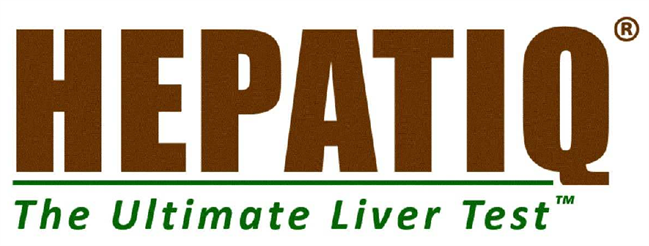Booth 1515
Hepatiq Inc.
HEPATIQ® -The Ultimate Liver Test™ - provides six indices of liver disease from a single scan: quantitative liver function, fatty liver disease/steatohepatitis, portal hypertension, alcoholic hepatitis, fibrosis stage and variceal size. [1-25] HEPATIQ is also the only product on the market that precisely and non-invasively quantifies liver function. Other techniques such as biopsies, elastography and blood tests estimate or score liver fibrosis but do not quantify function. QUANTITATIVE LIVER FUNCTION Quantitative liver function (PHM) can be reduced by infections, alcohol and fat buildup that cause the accumulation of fibrosis or scar tissue. The liver can regenerate new functioning nodules, and blood flow to the liver may increase, providing some mitigation. A large, badly scarred, stiff liver can have normal function (PHM>100)[4] if there are enough functional nodules. Once a patient’s PHM drops below 75, they may decompensate, that is, develop clinical problems. [5,6,11,14,19,20,24] If their PHM falls below 60, they may die if not transplanted soon.[10,15,18] If patients are treated and chronic liver injury is controlled, their PHM may improve. If PHM rises above 75, they may recompensate with recovery from clinical problems.[10,19,20,25] FUNCTION OUTPERFORMS FIBROSIS Biopsies, elastography and blood tests estimate or score liver fibrosis. Patient outcomes are determined by residual liver function, not the extent of fibrosis. This was established in the 8 year, prospective, multi-center, NIH sponsored HALT-C trial, which concluded that quantitative liver function may be more accurate than staging fibrosis in predicting clinical outcomes.[5,6] Subsequent clinical research has further confirmed that function outperforms fibrosis in predicting outcomes. [12,13,16,17,21,22,24] BETTER DISEASE MANAGEMENT The HEPATIQ indices are used for diagnosis, staging, interventions, and monitoring liver disease progression. They help identify those at risk of outcomes such as ascites, variceal bleeding, hepatic encephalopathy and liver-related death. [5,6,10,11,14,15,16,18,19,20,23,24,25] Differentials of these indices indicate fatty liver, steatohepatitis (alcoholic and non-alcoholic), cirrhosis, portal hypertension, varices and infiltrative spleen disease. [5,6,8,11,14,16,21,22,23,25]
Hepatiq Inc.
1200 Main Street
Suite B
Irvine, CA 92614
Telephone: (949) 307-2733
Email: dghosh@hepatiq.com

